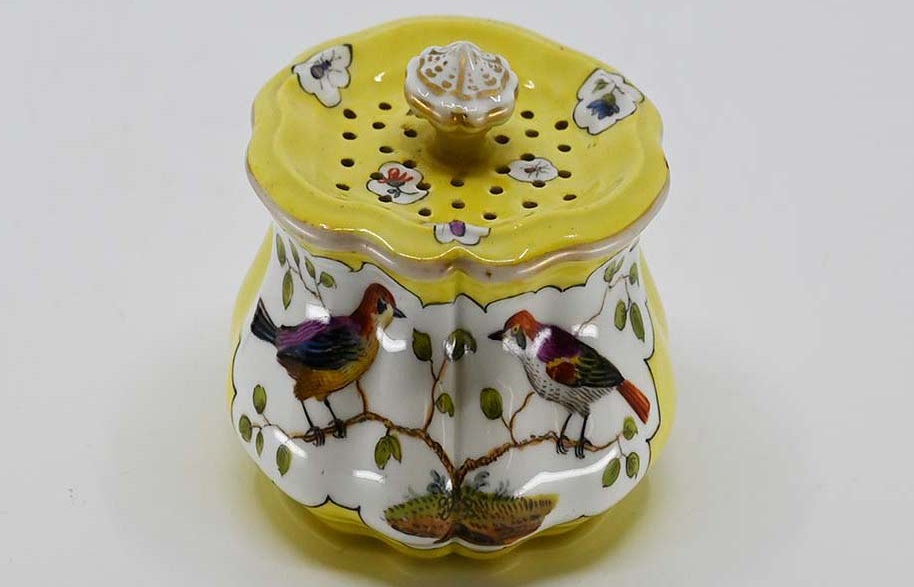Pounce Pot: Precision and Elegance in Writing

Pounce Pot
61.253
19th Century
Material: Painted porcelain
Description
Pounce, a fine powder made from ground cuttlefish bone, pumice, or tree resin, was a vital tool for 18th and 19th-century writing.
It served two main purposes: drying freshly applied ink, and smoothing rough surfaces to prepare them for writing with a quill or steel nib.
Pounce pots, often displayed alongside inkwells and quill stands, were designed to hold and dispense this powder. Featuring a perforated top for sprinkling pounce and a shallow dish to collect excess, these pots were not only practical but also beautifully ornate, reflecting the elegance of the Victorian writing desk.
During this period, professional correspondence relied heavily on cursive handwriting, or a “fair hand,” which emphasized uniform and visually appealing script.
Businesses trained clerks in this standardized penmanship, while calligraphy as an art form ranged from functional designs to intricate decorative works.
Fun Fact!
Cuttlefish, the source of one of pounce’s key ingredients, are saltwater mollusks whose calcium-rich, porous bones often wash ashore on beaches. Their abundance and unique composition made them an ideal, affordable material for crafting pounce.

